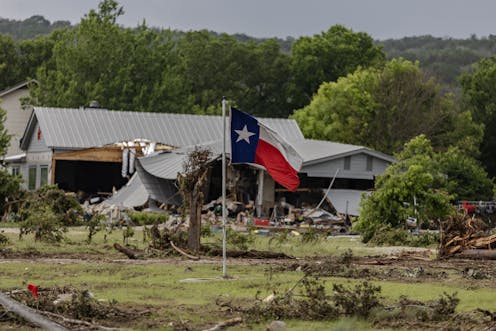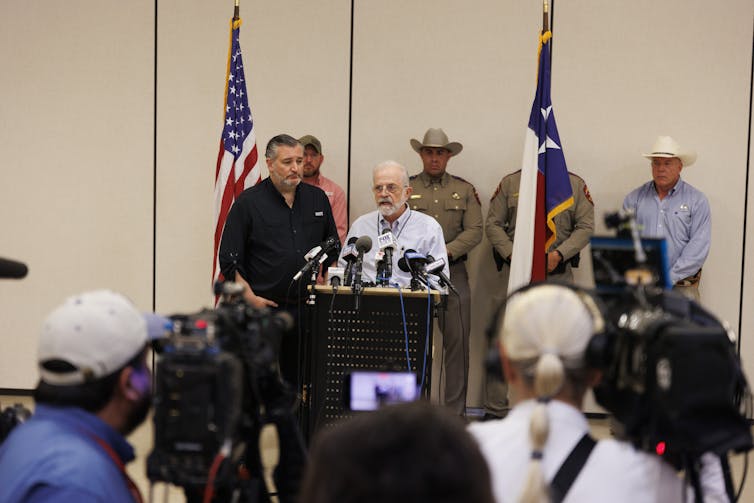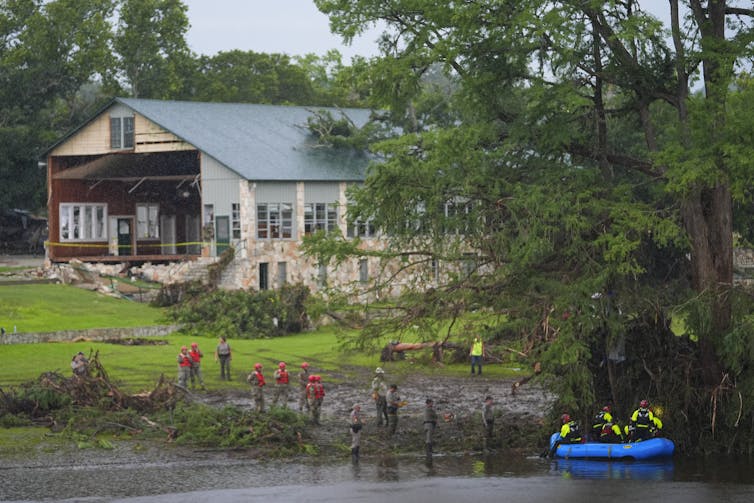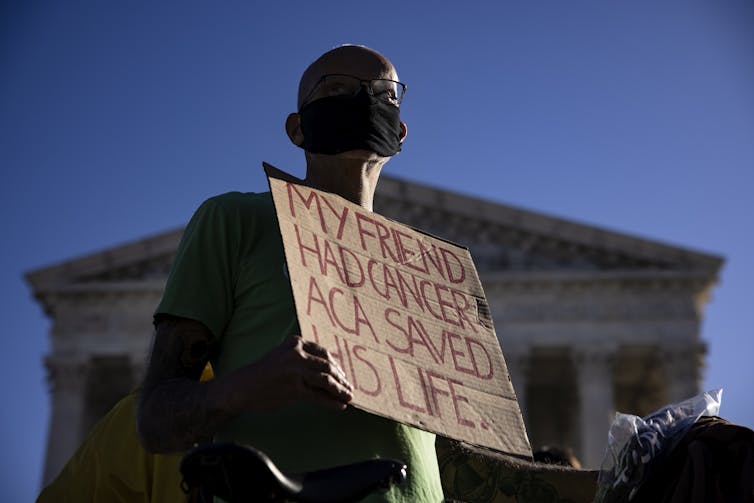Source: The Conversation – USA (2) – By Ivis García, Associate Professor of Landscape Architecture and Urban Planning, Texas A&M University

The devastating flash floods that swept through Texas Hill Country in July 2025 highlight a troubling reality: Despite years of warnings and recent improvements in flood planning, Texas communities remain dangerously vulnerable to flood damage.
The tragedy wasn’t caused just by heavy rainfall. It was made worse by a lack of money for early warning systems, by drainage systems and emergency communication networks that haven’t been updated to handle more intense storms or growing populations, and by the many older buildings in harm’s way.
A 2024 state report estimated the cost of flood mitigation and management projects needed statewide at US$54.5 billion. But in Texas, most of that work is left to local governments.
We study disaster planning at Texas A&M University and see several ways the state and Texas communities can improve safety for everyone.
Progress since Hurricane Harvey
Since Hurricane Harvey devastated the Houston area in 2017, Texas has made strides in flood planning.
The state in 2024 created its first comprehensive flood plan, which identifies flood risks statewide and recommends projects to reduce them. The state now requires all local governments to adopt and enforce flood plain regulations that meet federal standards, enabling residents to purchase federal flood insurance.
The plan represented a major shift for a state government that historically left flood planning to local communities.
However, it also revealed widespread risks in Texas: Approximately 5 million Texans live or work in flood-prone areas, and an estimated 1.5 million homes and other structures are in flood plains.
Flood risks are intensifying as Texas experiences more extreme rainfall. State climatologist John Nielsen-Gammon and colleagues at Texas A&M University found that extreme one-day precipitation has increased by 5% to 15% in Texas since the late 20th century, and another 10% increase is expected by 2036.
Rural communities lack resources
The biggest problem for small towns and rural communities isn’t just weak regulations. Many of them can’t afford to hire specialized staff for technical work such as hazard assessment and regulatory enforcement.
While the state provides planning frameworks, implementation and enforcement remain local responsibilities.
Budget limitations can mean one emergency manager serves as fire marshal, building inspector, engineer and flood plain administrator for hundreds of square miles.
These officials must still meet federal standards and develop detailed disaster plans. But cash-strapped communities often lack the funding to implement solutions.

Jorge Salgado/Anadolu via Getty Images
What they need is practical hazard mitigation plans. Those include specific evacuation routes for each neighborhood, identifying which buildings house vulnerable populations, such as older adults, and steps local officials can implement immediately during emergencies. It also means aligning of other local planning documents, such as comprehensive plans or land use plans. Access to flood gauge data, weather monitoring and social vulnerability mapping is also important for determining when to close roads or activate emergency shelters.
That work takes time, expertise and funding.
The challenge of older buildings
Creating safer communities also requires investment to address challenges with both new development and vulnerable existing structures.
For new construction, many communities require buildings to be built above flood level. The state could help small communities in this area by funding new local code enforcement jobs, similar to the way it provided training and guidance to local officials after Hurricane Harvey. However, that might not be possible in the Texas Legislature today.
The bigger challenge is older buildings. According to federal requirements, unless a structure floods or gets “substantially damaged” – meaning damage exceeds 50% of its value – there’s no requirement to make it safer.

AP Photo/Julio Cortez
Research shows that retrofitting homes by improving drainage to avoid future flood damage and [voluntary buyout programs can be effective]. Buyout programs allow families to sell their homes at market rate and relocate to higher ground when the programs are properly designed and funded.
Harris County’s buyout program after Hurricane Harvey acquired nearly 200 flood-damaged homes in the Houston area for a total of $20 million. That helped families escape repeated flooding. The homes were demolished, and the land became permanent open space. By preventing future development, the land can take on floodwater in the future without economic harm.
Many counties can’t afford buyout programs, though. A statewide voluntary buyout program could help them by prioritizing the most vulnerable properties. But to have a wide reach, such a voluntary program would need dedicated funding in the hundreds of millions of dollars.
Beyond voluntary buyouts, the state could expand programs that help property owners retrofit existing houses and other buildings, such as elevating structures, installing flood vents that allow water to flow through, or using flood-resistant materials. Tax incentives and low-interest loans could make these improvements more affordable while respecting property owners’ right to choose to participate or not.
Texas currently offers limited retrofit assistance through the General Land Office’s disaster recovery programs. But it lacks a comprehensive retrofit program with dedicated funding that would help homeowners prepare before the disaster strikes.
Where communities are taking important steps
Some innovative approaches are emerging in Texas cities and counties.
Liberty and Comanche counties have partnered with Texas A&M University’s Texas Target Communities program to create comprehensive plans that help their communities grow but in safer ways. Research shows that when communities integrate land use planning, hazard mitigation, emergency response and economic development plans, they can better ensure that new development avoids high-risk areas and that existing vulnerable areas are targeted for improvement projects.
Houston, despite lacking traditional zoning, has implemented strict flood plain regulations that require new construction to be elevated above flood levels and prohibit development in the most dangerous flood-risk areas. By maintaining a top rating in FEMA’s Community Rating System, the city helps residents qualify for discounts on flood insurance.
The tragedy in Hill Country is a reminder that many Texas communities face flood risks yet lack the funding and technical capacity to implement comprehensive flood risk reduction on their own without state support. As extreme weather becomes more common, the question is whether communities will be able to protect themselves without more help.
![]()
Shannon Van Zandt is affiliated with Texas Housers, a non-profit advocating for affordable housing for low-income Texans.
Ivis García and Jaimie Hicks Masterson do not work for, consult, own shares in or receive funding from any company or organization that would benefit from this article, and have disclosed no relevant affiliations beyond their academic appointment.
– ref. Many Texas communities are dangerously unprepared for floods − lack of funding plays a big role – https://theconversation.com/many-texas-communities-are-dangerously-unprepared-for-floods-lack-of-funding-plays-a-big-role-261090





















